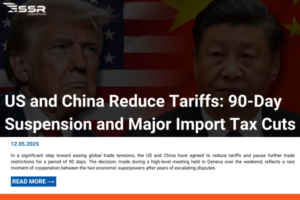According to data released by the General Statistics Office (Ministry of Finance) on April 6, Vietnam’s import and export situation in March and the first quarter of 2025 continued its positive momentum. In March alone, the total import-export turnover reached USD 75.39 billion, up 18.2% from the previous month and 16.6% year-on-year.
Cumulatively, in Q1 2025, the total import and export turnover amounted to USD 202.52 billion, a 13.7% increase compared to the same period last year. Of this, exports rose by 10.6% and imports by 17.0%.

Exports Continue to Drive the Import and Export Situation
In March 2025, export turnover reached USD 38.51 billion, up 23.8% from February. The domestic sector contributed USD 11.08 billion (up 32.1%), while the foreign-invested sector, including crude oil, contributed USD 27.43 billion (up 20.7%). Compared to the same month last year, exports increased by 14.5%.
In Q1 2025, total export value reached USD 102.84 billion, up 10.6% year-on-year. The domestic sector accounted for USD 29.02 billion (28.2% of total exports, up 15.0%), while the foreign-invested sector brought in USD 73.82 billion (71.8% of the total, up 9.0%).
Notably, 18 export items exceeded USD 1 billion in value, including 5 products surpassing USD 5 billion – accounting for 84.5% and 59.9% of total export value respectively.
Export Structure in Q1 2025
-
Processed industrial goods: USD 90.92 billion (88.4%)
-
Agricultural and forestry products: USD 8.86 billion (8.6%)
-
Seafood: USD 2.31 billion (2.3%)
-
Fuel and minerals: USD 0.75 billion (0.7%)
Strong Import Growth Adds Complexity to the Import and Export Situation
In March 2025, import turnover reached USD 36.88 billion, up 12.9% month-on-month and 19.0% year-on-year. The domestic sector imported USD 13.98 billion (up 17.8%), while the foreign-invested sector brought in USD 22.9 billion (up 10.1%).
Overall in Q1 2025, Vietnam imported goods worth USD 99.68 billion, a 17.0% increase compared to the same period last year. The domestic sector accounted for USD 36.78 billion (up 19.3%), and the foreign-invested sector contributed USD 62.9 billion (up 15.8%).
There were 17 imported items exceeding USD 1 billion in value, including 2 that surpassed USD 5 billion, accounting for 77.2% and 44.4% of total imports, respectively.
Import Structure in Q1 2025
-
Production materials: USD 93.51 billion (93.8%)
-
Machinery, equipment, tools, and spare parts: 50.8%
-
Raw materials and fuels: 43.0%
-
-
Consumer goods: USD 6.17 billion (6.2%)
Key Trade Partners in Vietnam’s Import and Export Situation
-
Largest export market: United States (USD 31.4 billion)
-
Largest import market: China (USD 38.1 billion)
Trade surplus:
-
United States: USD 27.3 billion (+22.1%)
-
EU: USD 9.9 billion (+15.7%)
-
Japan: USD 0.6 billion (over 5x year-on-year)
Trade deficit:
-
China: USD 24.9 billion (+43.3%)
-
South Korea: USD 7.1 billion (+14.4%)
-
ASEAN: USD 3.8 billion (+83.2%)
Vietnam posted a trade surplus of USD 1.63 billion in March 2025. Overall, Q1 2025 saw a trade surplus of USD 3.16 billion—down from USD 7.7 billion in the same period last year. Notably, the domestic sector posted a trade deficit of USD 7.76 billion, while the foreign-invested sector (including crude oil) recorded a trade surplus of USD 10.92 billion.

Outlook on Vietnam’s Import and Export Situation in Q1 2025
Vietnam’s import and export situation in the first quarter of 2025 highlights a resilient and steadily recovering economy. Exports continued to demonstrate strong momentum, driven by high global demand for key manufacturing goods and sustained performance across major export categories such as electronics, textiles, and agricultural products. Meanwhile, imports saw significant growth, largely fueled by increased demand for machinery, equipment, and raw materials – reflecting rising domestic production activity and preparation for future output expansion.
Although the trade surplus narrowed compared to the same period in 2024, the overall trade performance remains a strong indicator of recovery in Vietnam’s industrial sector. It also signals the strengthening of global supply chain integration and the country’s continued competitiveness as a vital player in regional and international trade networks.
Stay updated with the latest trade insights on SSR Logistics‘ news platform.









